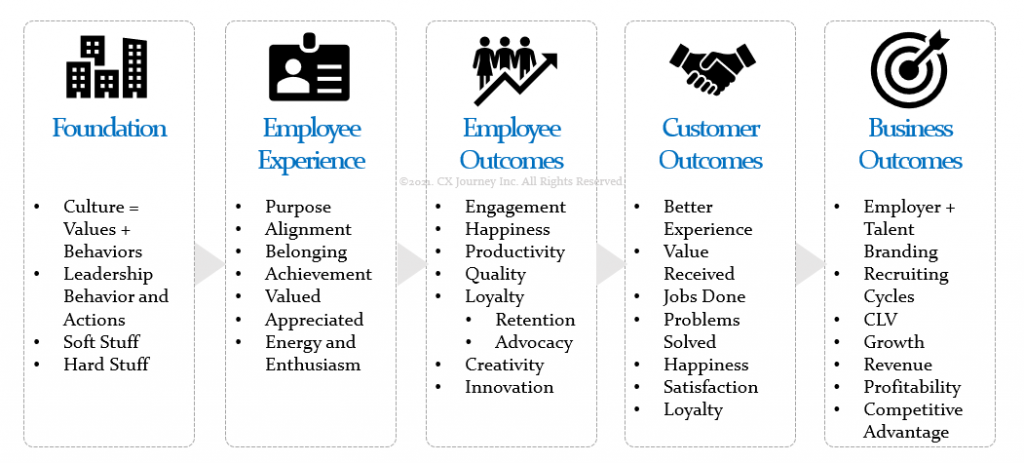Heard enough about the Great Resignation? Well, sadly, this has been a long time coming, and at this point, we should continue talking about it. Non-stop.
You’ve heard me say this before. I’ve been talking about the importance of employees to the business and to customer experience since my days at J.D. Power and Associates 30 years ago; sadly, in the heat of it all, employees are still forgotten.
So, let’s consider this when it comes to the Great Resignation: People don’t leave managers; they leave the culture of the organization. I believe that’s a more-accurate statement, especially when we know that culture is the foundation of the organization and that the culture is shaped by the worst behavior a leader is willing to tolerate or allow.
Imagine working for a company where leaders allow behavior unbecoming of the organization and, especially, unbecoming of you. Imagine working for a company where the culture is not a people-centric one. Imagine working for a company where putting people before products, profits, and metrics is a pipe dream. Imagine working for a company with a culture of distrust. Imagine working for a company where they circle the wagons and shoot inward.
If you’re nodding your head because these describe your work environment, I’m sorry to hear that. But I’m not surprised. I’ve seen it. I’ve lived it.
Culture is the foundation of the organization. It’s the blood that flows through the veins. It’s the DNA. And it’s driven by leaders. It’s the precursor to a great employee experience. (For a refresher on exactly what employee experience is and what it entails, go back to this post.) This graphic outlines the connection between culture and outcomes, with it being the foundation and the precursor, as I mentioned.

I recently came across an article by MITSloan Management Review titled, Toxic Culture is Driving the Great Resignation. I nodded my head as I read the article; they’ve done some great research with interesting findings. They found that companies with healthy cultures, e.g., Southwest Airlines, Johnson & Johnson, Enterprise Rent-A-Car, and LinkedIn, had lower-than-average turnover during the first six months of the Great Resignation. They noted that “culture is a much more-reliable predictor of industry-adjusted attrition than how employees assess their compensation.” And they discovered that “a toxic corporate culture is 10.4 times more powerful than compensation in predicting a company’s attrition rate compared with its industry.”
Not sure what a toxic culture looks like? Revisit my article, Signs You Work in a Toxic Environment. In the MITSMR article, they found that factors contributing to toxic cultures include failure to promote DEI, employees feeling disrespected, and unethical behavior. And then, “… a toxic culture is the biggest factor pushing employees out the door during the Great Resignation.”
What can you do?
Fix the culture, fix the outcomes. Take a look at my article, 7 Pillars of a Strong Culture. Along with the seven pillars, which must be clearly defined, socialized, and operationalized, there are lot of great ideas on what you need to do to ensure you have just that, a strong culture rather than a toxic one.
Culture is what motivates and retains talented employees. ~ Betty Thompson

